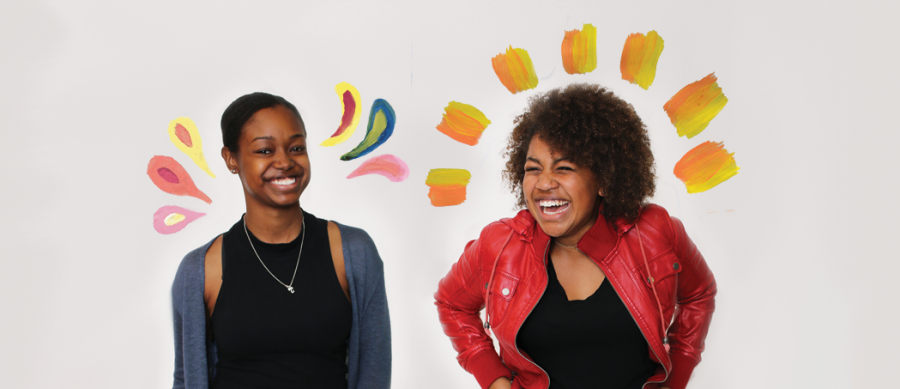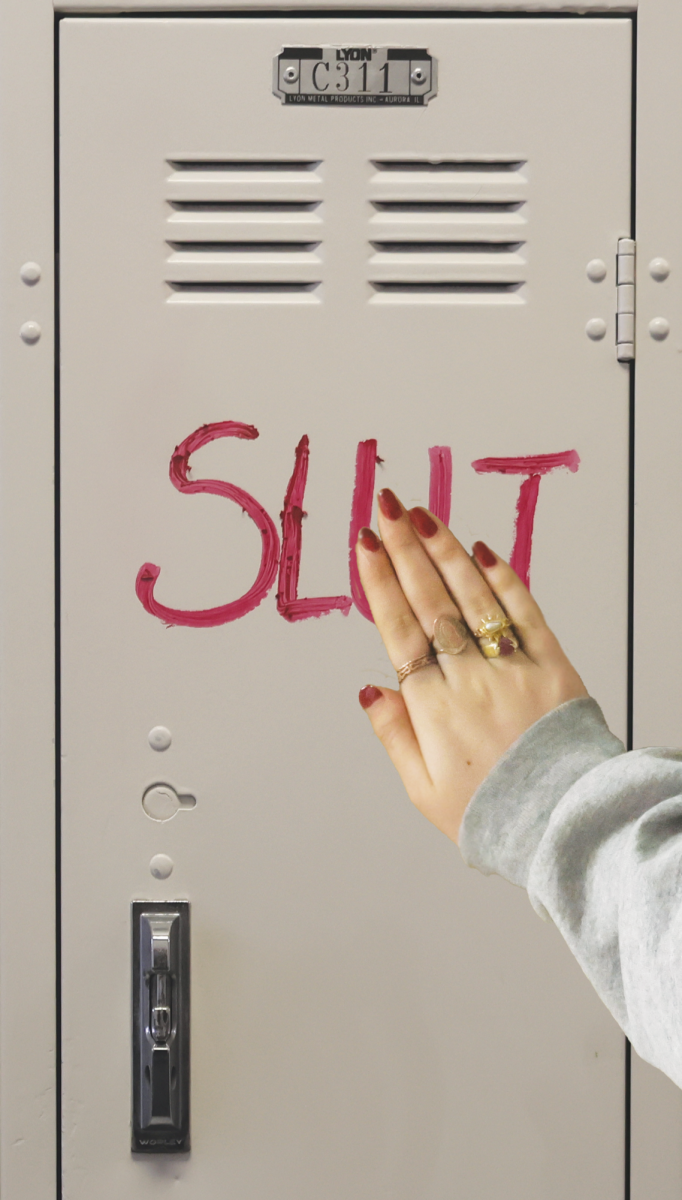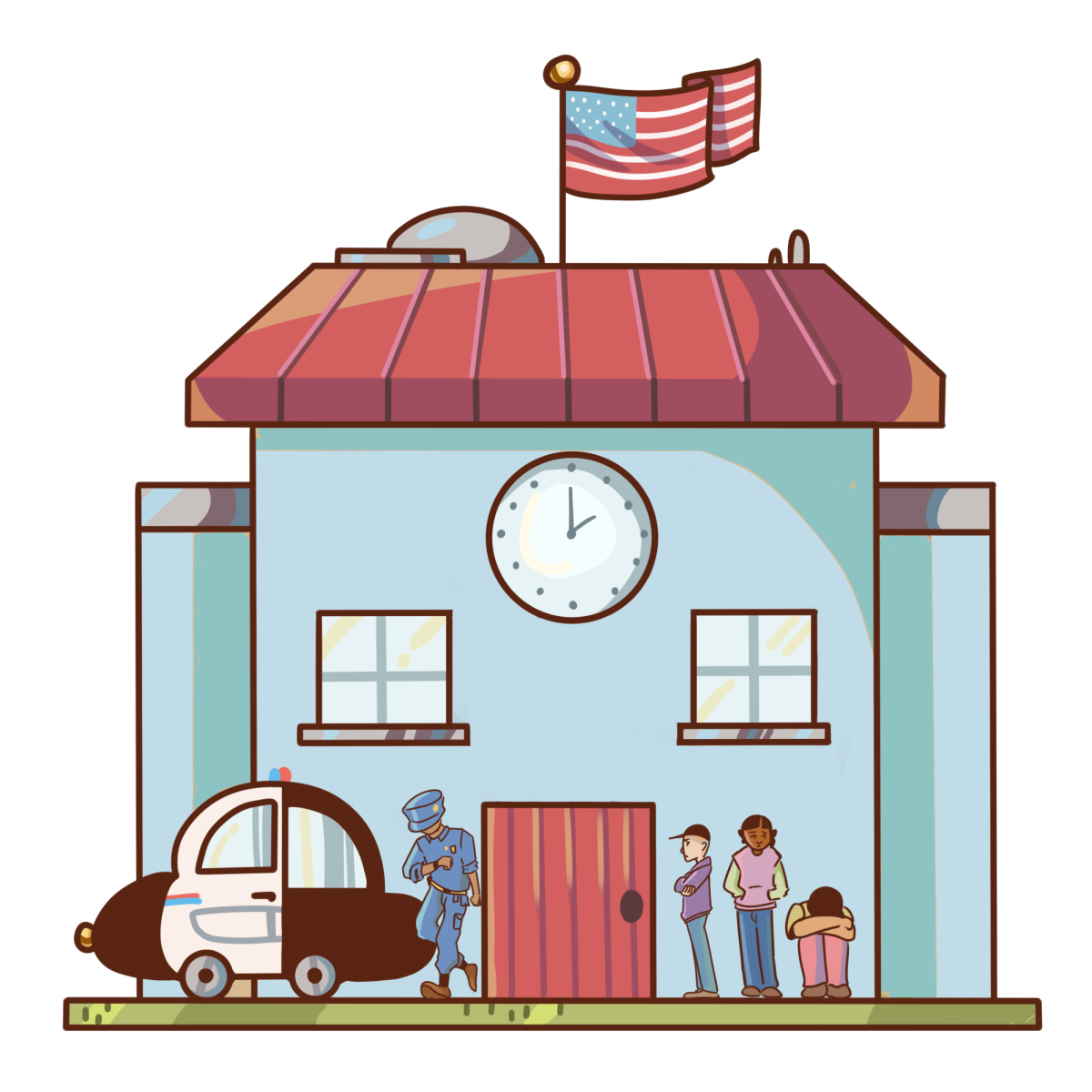On any given Monday morning, Chalmers 307 is buzzing.
The room is packed with more than 30 students and faculty members, eager to debate and discuss race-related issues. The noise level climbs as friends catch up and the student leaders prepare to begin.
A single guiding question, posed by one of the five student leaders, may lead to a lively discussion that runs until the activities period ends. Or the group may run through three or four relevant topics and use the remainder of the time allotted to plan upcoming awareness events. The students check in with one another, finding support among the large group of peers, faculty leaders and faculty members.
The Black Leadership, Awareness and Culture Club draws people because of its passion, group member Courtney Nunley ’17 said. But more than this, she said, it draws people in for the community that it offers on campus.
“Almost every time we meet, it feels so much like a big family,” Nunley said. “I remember after our first sleepover, we were up talking until maybe 1 a.m. about issues pertaining to black students in private schools and at Harvard-Westlake, specifically. It felt so nice to have all our internalized, negative feelings validated by people going through the same experiences. We got extremely close after that.”
This was the first year that BLACC implemented club-wide sleepovers, BLACC leader Taylor Jones ’18 said.
“Club members know each other much better now, so everyone says hi to each other around campus, and during our meetings, the conversation is much more open and honest because of the network of trust we’ve created,” Taylor Jones said.
Along these lines, BLACC also hosted their first annual retreat at the Middle School last year, where the middle and upper school factions of the organization met and interacted with one another. Members said that these type of activities have worked to bond the group even further.
“For me, it’s really just the club becoming more of a community rather than something you just do during your free time, during break,” BLACC leader and the Latino-American Student Organization leader Daniel Varela ’18 said.
This year of BLACC been focused on strengthening the community within the club and broadening the support system outside of BLACC.
“We have collaborated with other clubs a lot more [this year] in an effort to show that we are allies to many other affinity groups,” Taylor Jones said.
Through reaching out to other on-campus affinity groups such as LASO, La Femme and the Gender-Sexuality Alliance, BLACC strives to show solidarity among minorities while simultaneously communicating their messages of awareness to a greater audience, BLACC leader Anya Andrews ’17 said.
“I feel like there’s a lot of pressure that lies upon affinity groups to stand up for themselves,” Andrews said. “I think that it’s been really great to have this coalition, who are all standing up and saying ‘It’s not just our job.’ We are so glad to be in this coalition, but we need [the rest of the school community’s] help, too, because, again, we’re still in the minority. Even together, we’re still in the minority.”
The first of these collaborations was the creation of a video that listed anonymous, derogatory quotes heard on campus, which was presented to upper school students Nov. 2 during an assembly.
“[The video] was the perfect template to reveal how Harvard-Westlake has its imperfections, which are okay, but reflects the lack of education we have in terms of knowing right from wrong,” Varela said. “We were proud of [the video] and knew this [wouldn’t be] the last time our coalition would be doing a project like this.”
BLACC also participated in the Jan. 30 student-led multicultural brunch at the Upper School, which hosted members from all campus affinity groups, further emphasizing how the groups have sought to find strength in one another.
The efforts to reach out to other groups on campus have, been in part, a response to the recent race-related controversies on campus. Specifically, the response has been prompted by students using racial and homophobic slurs on social media and messaging platforms.
“After the texts came out, I think the whole club, and especially the girls in the club, were at a big turning point,” Nunley said. “We really needed support.”
BLACC has also led efforts in inviting the school community to participate in their events and offering students a spot in the “family” that BLACC houses. The student leaders have been stressing the idea of a safe space this year and have been encouraging students of all races to come and join the discussion, Andrews said.
“These unfortunate incidents have allowed more people to feel welcome to come to these meetings and be a part of the discussion,” BLACC leader Taylor Redmond ’18 said. “They get to feel how [BLACC] meetings are actually run, as opposed to how they thought they were run.”
Redmond said that overall, she feels that the school has been constructive in responding to the controversies with the open-door Moving Forward meetings. She said, however, that there still are other steps that need to be taken in order for the school to progress further, particularly in facilitating a more open dialogue between affinity groups and the rest of the school.
Aside from actively participating in the Moving Forward meetings and inviting a black history month speaker who would elaborate on the meaning of racial equality, overall, this has been a year of taking action, BLACC faculty leader and Upper School Dean Chris Jones said.
“We have more students this year who are interested, realizing the commonalities in the issues that we face, and saying, ‘Wow, this isn’t just a black student issue, or a gay student issue, or a woman’s issue, or a Hispanic/Latino student issue, or even a white student’s issue,’” Chris Jones said. “There’s more interaction and conversation around that, which I think has elevated the platforms of all the different groups. It has made them feel more emboldened to do things that are more action-oriented.”
The tensions on campus have also encouraged BLACC members to work especially hard in spreading awareness of their presence at school. They have striven to find new ways of introducing diverse perspectives on the matter to the school community, BLACC leader Phaedra Robinson ’17 said.
“The silver lining of all that has happened in the past few weeks is having a platform to invite other prominent figures on campus to our events and our meetings,” Robinson said. “I think it’s fostered a lot of good conversation, with a lot of different viewpoints.”
Chris Jones also said that a lot of the changes that BLACC has enforced this year have come from the initiative of the students, rather than the faculty advisors. Faculty members are present at each meeting, though the students lead the discussions and run the club, he said. Other faculty sponsors and members include Head of Athletics Terry Barnum, Upper School Dean Maude Bond, Benefits Administrator Yutopia Essex and Upper School Librarian and Testing Coordinator Candris Madison.
BLACC reaches beyond students and faculty who see each other on campus every day. It works closely with three partner organizations: Harvard-Westlake African-American Alumni Network, Parents of African-American Harvard-Westlake Students and the Justin Carr Wants World Peace Foundation, creating a wider network of support than meets the eye.
“We’re in awe,” PAAHWS leader Kym Begel (Carter ’17, Marie ’17) said. “We’re proud of BLACC, and we’re just happy to be able to support them.”
HWAAAN and PAAHWS communicate with BLACC to help bring speakers to campus and offer resources for events such as speaker receptions.
When the JCWWPF reached out to BLACC to help promote the Jog-A-Thon earlier this year, HWAAAN also participated, bringing ice cream and treats for runners after the event. This is one of many examples of the three organization’s cooperation.
“There is just more energy surrounding what the group wants to do this year,” Chris Jones said. “There is more of a global focus in terms of what we’re doing.”
Aside from being one of the largest student-run organizations on campus, BLACC is also one of the oldest.
The club began in the early 90s at the Middle School, Middle School Attendance and Health Coordinator and middle school BLACC faculty leader Brenda Simon said.
“This club has changed so much [since it began],” Simon said. “It’s gone from being a handful of students to a room full of students.”
BLACC appears to be a family that continues long after high school ends, as evident by the active alumni network which nearly all BLACC members move into after graduation, Chris Jones said.
“There’s a reason for progression, for us to continue moving forward,” Andrews said. “It’s part of our mission statement — it’s a part of who we’re trying to be as a community. We shouldn’t be focusing on the past. I feel like right now, so many people are backtracking and trying to apologize for the past. We appreciate that, but let’s move forward now.”





































